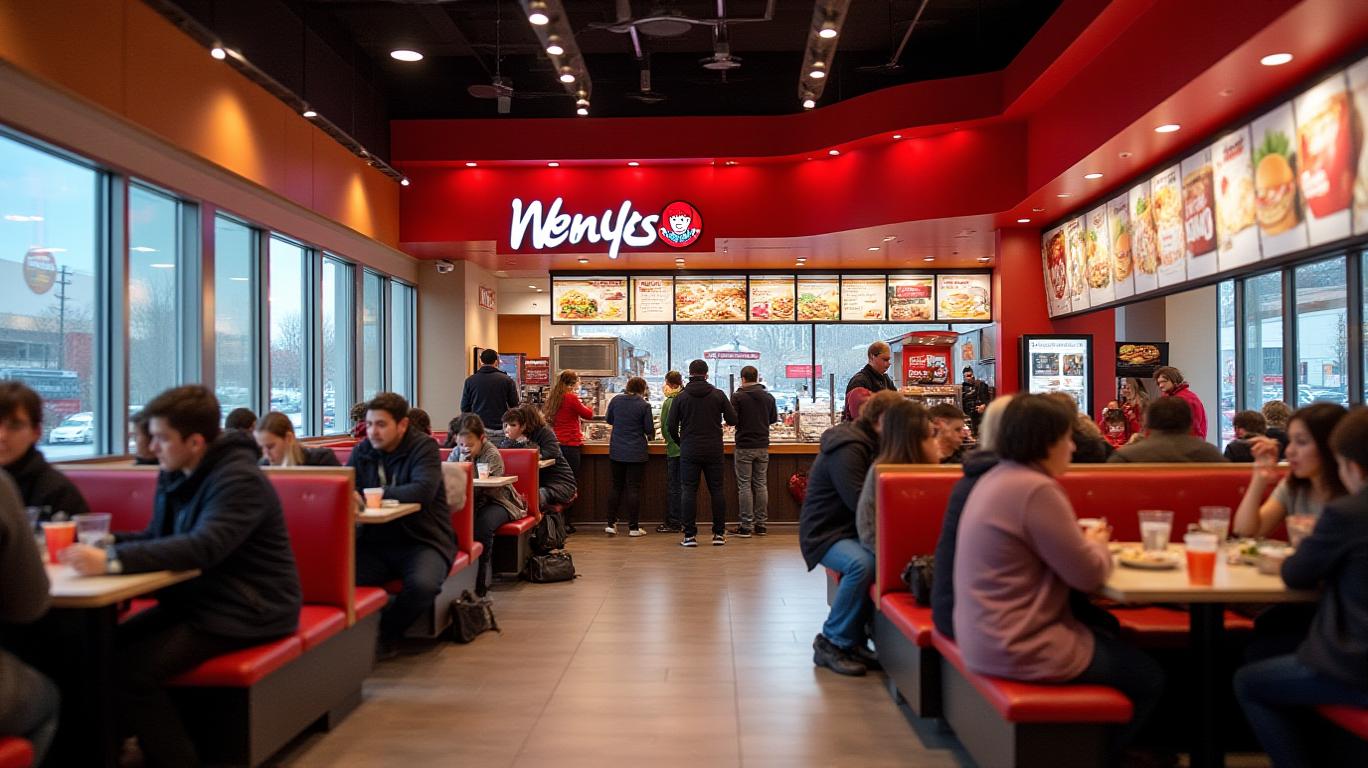Wendy's (WEN) Earnings Preview: Can the Burger Giant Bite Back in Q1?
As Wendy’s (WEN) prepares to report Q1 2025 earnings on May 2, investors are bracing for a mixed bag of results amid operational overhauls and a challenging macro backdrop. With consensus estimates pointing to a year-over-year decline in earnings and revenue, the question is whether the fast-food chain can leverage its strategic initiatives to offset headwinds like weather disruptions and rising costs. Let’s dissect the numbers and what they mean for shareholders.
What to Expect: The Numbers Tell a Cautionary Tale
The Wall Street consensus for Q1 2025 calls for an EPS of $0.20, down 13% from the $0.23 reported in Q1 2024. Revenue is projected to fall to $523.98 million, a 2% drop from the prior-year period. These figures reflect downward revisions over the past month, with the Earnings ESP (a measure of surprise probability) at -1.14%, signaling skepticism about an upside beat.
Historically, Wendy’s has been inconsistent. In Q4 2023, it missed EPS estimates by 8.69%, but in Q3 2023, it beat by 4.17%. The company’s Zacks Rank #3 (Hold) further underscores cautious expectations. Investors will scrutinize whether the Q1 miss is a one-off or a sign of deeper struggles.
The Operational Overhaul: Can the "Model of Excellence" Deliver?
Wendy’s has launched a sweeping initiative called the “Model of Excellence”, aimed at boosting consistency and profitability. Key components include:
- Restaurant Assessments: A scored tool prioritizing food quality and operational systems.
- Tech Investments: Real-time analytics platforms and automated financial tools for franchisees.
- Labor Efficiency: Upgrades like handheld tablets and wear-wash dish systems to reduce hours by ~1%.
The chain is also doubling its field operations staff to support underperforming locations. This focus on P&L benchmarking is critical, as Wendy’s aims to close a 200–300 basis-point profit margin gap with peers by 2028.

On the menu front, the expansion of Frosty Fusions (e.g., Orange Dreamsicle) and Saucy Nuggets targets higher-margin items. Breakfast sales, already up 6% in Q4 2023, are a key growth lever, with a $55 million investment to boost weekly breakfast sales per restaurant to $6,000 by 2026.
Risks and Challenges: Weather, Costs, and Dividend Sustainability
- Weather-Driven Softness: Management has already flagged Q1’s weak start due to adverse weather, which dented traffic. While March saw a partial rebound, the quarter’s SRS (same-restaurant sales) is expected to decline year-over-year.
- Supply Chain Pressures: Rising trucking rates (+7%–19% projected for 2025) and labor costs could squeeze margins. The chain’s reliance on just-in-time logistics makes it vulnerable to further disruptions.
- Dividend Concerns: Wendy’s pays a $0.25 quarterly dividend, implying a 105% payout ratio based on consensus EPS. This is unsustainable if earnings remain depressed, risking a cut or capital return to shareholders.
Analyst View and Stock Performance: A Mixed Bag
Analysts are split, with a Hold consensus, 4 “Buy” and 2 “Strong Buy” ratings. The average price target is $17.69, with estimates ranging from $14.00 (Barclays) to $17.00 (Truist).
The stock trades at $12.78, below its 50-day ($14.33) and 200-day ($16.08) moving averages. Bulls might argue the valuation is cheap, but the dividend payout ratio and tepid growth prospects leave room for skepticism.
Conclusion: A Make-or-Break Quarter for Strategic Turnaround
Wendy’s Q1 results will be a litmus test for its Model of Excellence and ability to navigate external headwinds. On one hand, initiatives like tech-driven efficiency and menu innovation position the chain to rebound in 2025. On the other, the dividend’s sustainability, margin pressures, and lingering operational gaps are red flags.
If earnings miss expectations further, the stock could face downward pressure, especially with the Zacks Rank #3 and high payout ratio. However, a beat—or strong guidance—could validate the turnaround narrative, potentially lifting shares toward analyst targets.
Investors should focus on:
- Margin improvements: Whether U.S. company margins hit targets (up >200 bps by 2028).
- Breakfast and beverage performance: Sales growth here could offset weak burger demand.
- Execution clarity: Management’s roadmap for closing the P&L gap and addressing labor costs.
With a market cap of $2.5 billion, Wendy’s has room to grow, but execution must align with ambition. Until then, the jury remains out on whether this burger giant can reclaim its bite.
Final thought: Wendy’s story is now a tale of two paths—strategic reinvention versus the weight of legacy challenges. The earnings report will signal which road it’s on.










